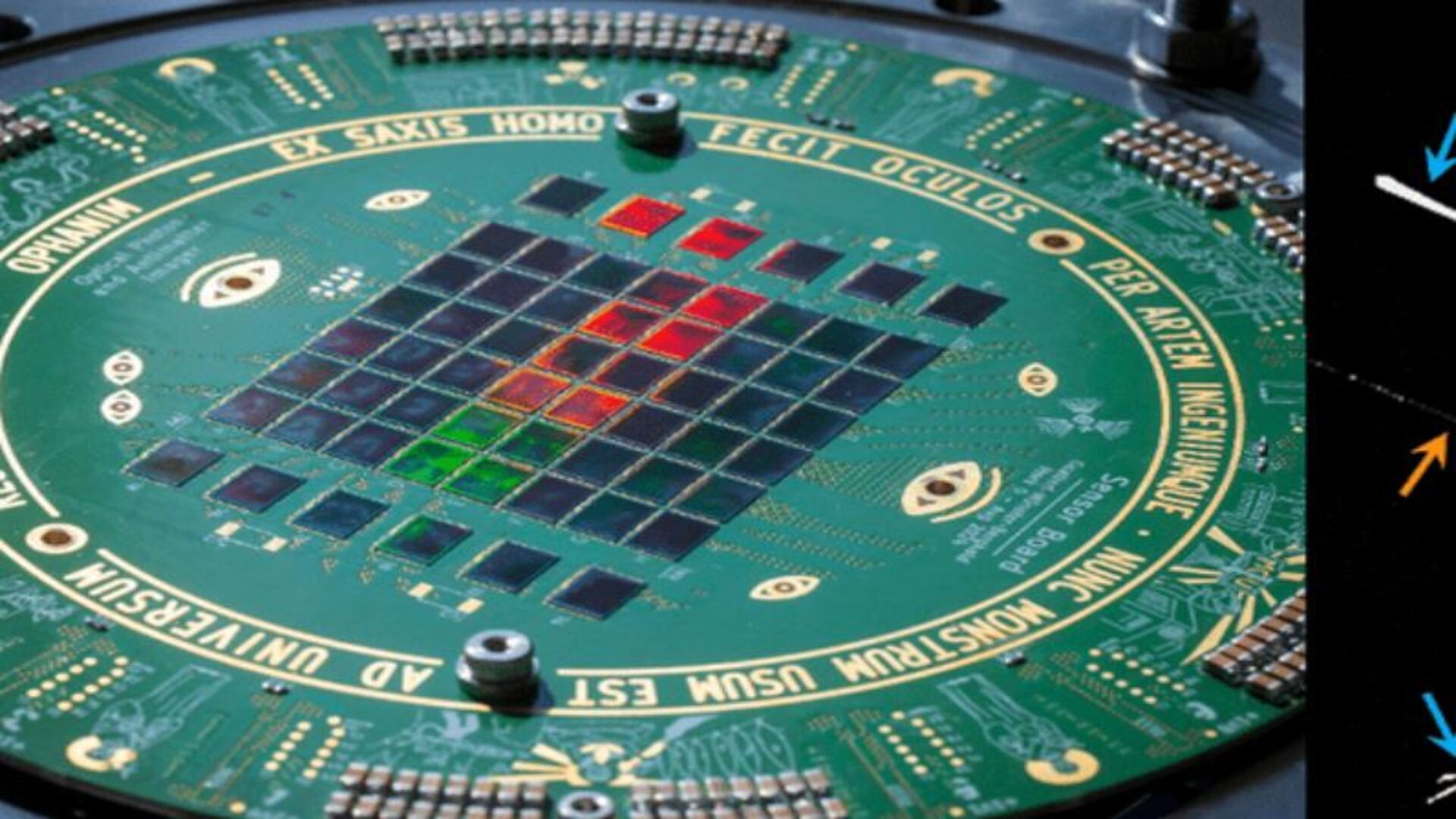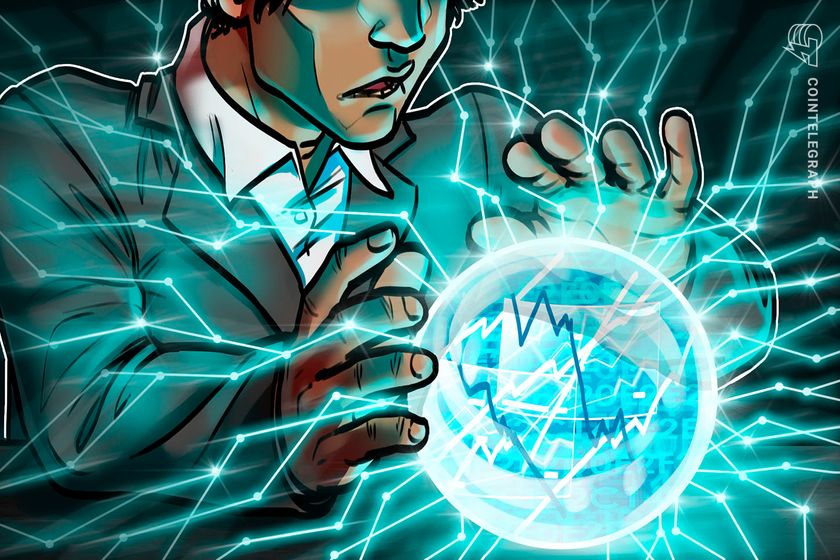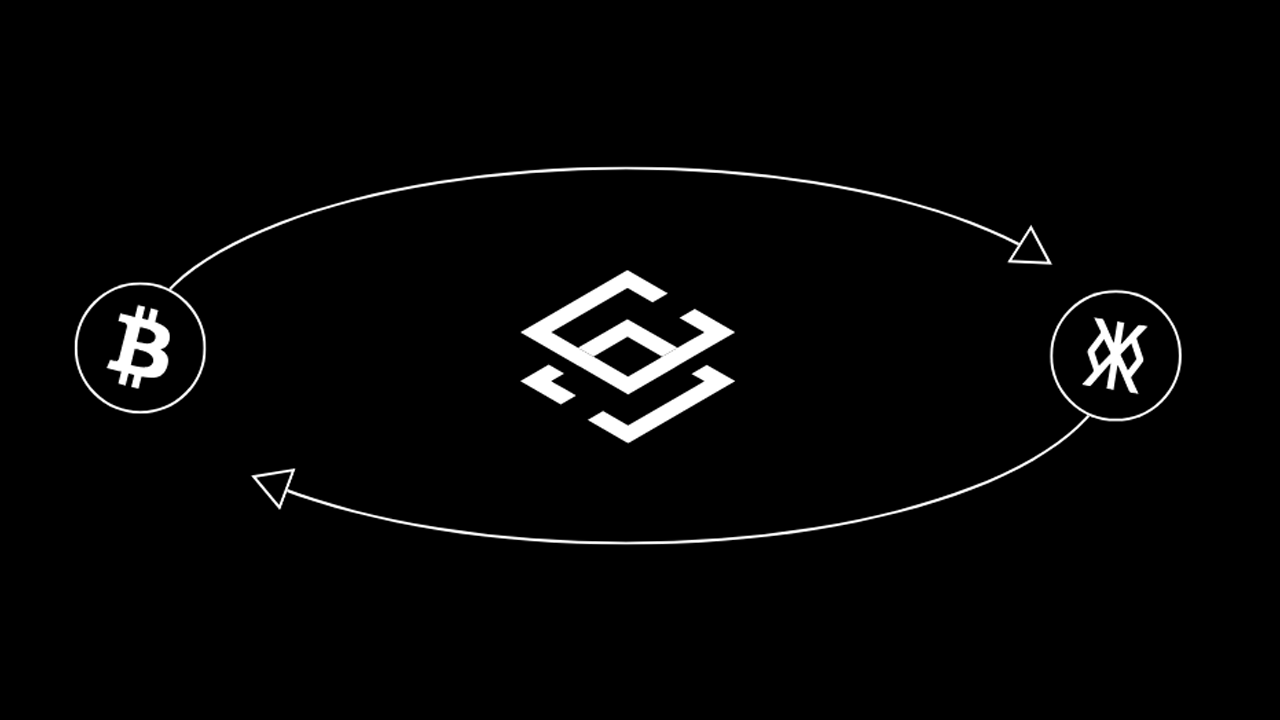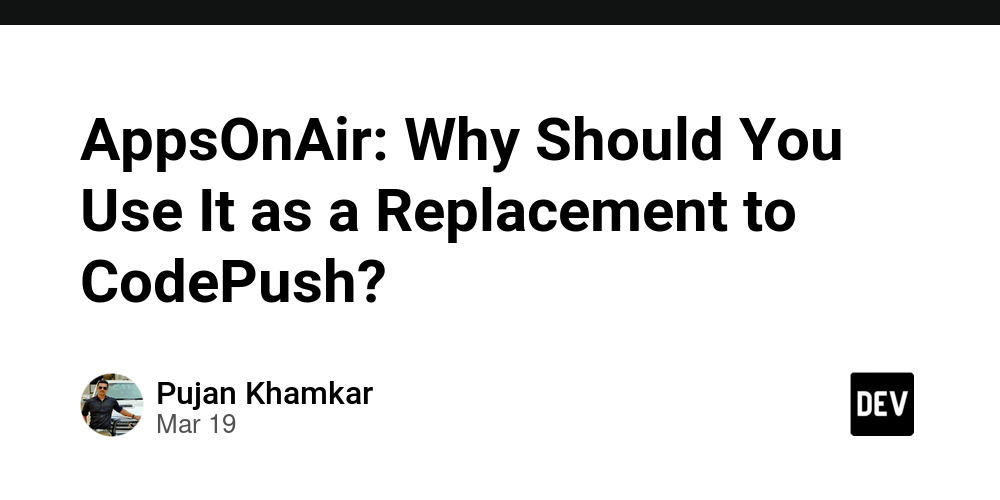Exploring The Sandbox’s Role in Musk's Metaverse Vision
Abstract This post delves into the convergence of The Sandbox—a decentralized virtual world powered by blockchain technology—and Elon Musk’s bold visions for the metaverse. From understanding core concepts such as blockchain, NFTs, and decentralized ownership to exploring practical use cases, technological challenges, and future trends, we dissect how The Sandbox can serve as a building block in Musk's expansive digital universe. Throughout the post, we incorporate tables, bullet lists, and authoritative links, including insights from resources like The Sandbox, Wikipedia’s article on the metaverse, and the original article Exploring The Sandbox’s Role in Musk's Metaverse Ideas. We also highlight thought leadership from the Dev.to community on open source licensing and decentralized funding. Introduction The digital space is evolving rapidly with innovative technologies such as blockchain, NFTs, and decentralized platforms redefining how we interact with virtual assets. The Sandbox stands out as an ecosystem that blends these innovations to create a persistent digital world where users can own virtual real estate, craft creative experiences, and engage with a dynamic economy powered by its native SAND token. Simultaneously, visionary leaders like Elon Musk are exploring new frontiers by leveraging technology to push the boundaries of virtual realms. Musk’s plans for the metaverse could complement the ethos of democratized content creation embedded in The Sandbox, leading to a digital universe where ownership, interoperability, and social collaboration become the norm. Background and Context The term metaverse describes a persistent, immersive digital space where augmented reality (AR), virtual reality (VR), and blockchain converge to facilitate social, commercial, and creative interactions. According to Wikipedia, the metaverse provides an integrated environment for work, play, and social activities in a digital format. In this evolving landscape, blockchain technology emerges as a transformative force that supports decentralized economic models and enhanced security through cryptographic protocols. The Sandbox is built on the Ethereum blockchain and enables users to secure virtual land, create unique NFTs, and monetize interactive experiences. This platform not only exemplifies the paradigm shift in virtual economies but also offers a tantalizing glimpse into a future where digital and physical realities merge. Coupled with Musk’s vision—highlighted by his ventures like Neuralink and SpaceX—the integration of advanced technologies could yield a hyper-connected and democratized metaverse. Core Concepts and Features Below, we break down the core components that define the synergy between The Sandbox and Musk's metaverse vision: 1. Blockchain and Decentralized Ownership Blockchain offers a secure and immutable layer to virtual assets, ensuring transparent ownership of digital properties. The Sandbox leverages this by enabling users to purchase and trade virtual real estate via decentralized platforms. Key Benefits: Immutable Ownership: Digital assets and NFTs remain secure against tampering. Transparency: Public ledgers ensure that asset histories are verifiable. 2. NFTs and Economic Innovation Non-Fungible Tokens (NFTs) have revolutionized how art, music, and digital media are funded and traded. In The Sandbox, NFTs represent virtual assets that can be resold or used in creating personalized experiences. Economic Impact: Virtual Real Estate Trading: Property within The Sandbox can be bought, sold, or developed with economic incentives similar to physical markets. User Monetization: Creators can monetize their digital inventions through the sale or licensing of NFTs. For a deeper dive into NFT value propositions, read Why Are NFTs Valuable. 3. Technological Interoperability and AI Integration Musk’s ventures in AI and neural interfaces (e.g., Neuralink) can enhance virtual immersion and interaction. By combining AI and blockchain interoperability, platforms like The Sandbox can create smarter, more adaptive digital interfaces. Interoperability Factors: Cross-Platform Integration: Allowing assets to work seamlessly across various metaverse platforms. Enhanced User Experiences: Integration with AI can lead to personalized and adaptive virtual environments. 4. Social and Cultural Impact The Sandbox inherently promotes a collaborative digital culture by empowering users to brainstorm, build, and share their creations in a global community. This aligns with Musk's ambition of fostering inclusive innovation, where technology leads to collective human advancement. Table: Core Components and Their Benefits Component Technology Benefits Blockchain Ethereum Immutable records, decentralized ownership, enhanced transparency Non-Fungible Tokens NFT St
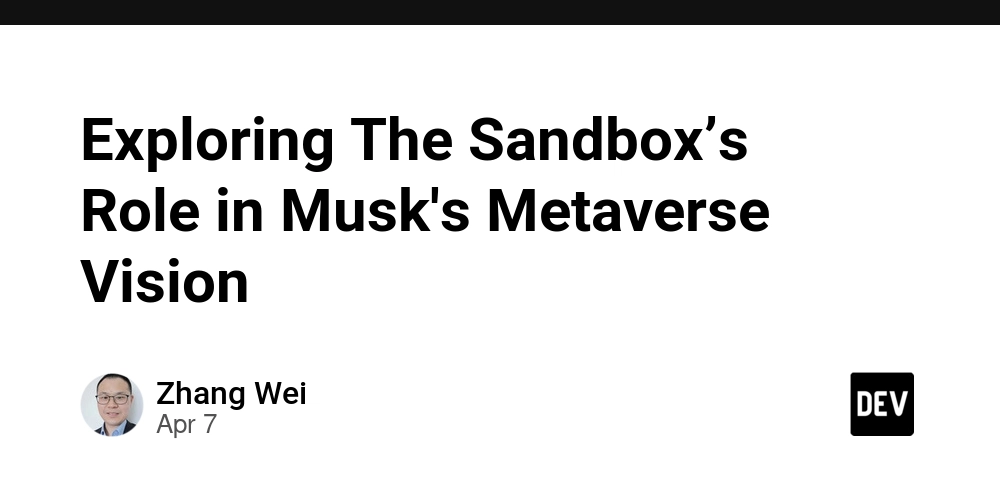
Abstract
This post delves into the convergence of The Sandbox—a decentralized virtual world powered by blockchain technology—and Elon Musk’s bold visions for the metaverse. From understanding core concepts such as blockchain, NFTs, and decentralized ownership to exploring practical use cases, technological challenges, and future trends, we dissect how The Sandbox can serve as a building block in Musk's expansive digital universe. Throughout the post, we incorporate tables, bullet lists, and authoritative links, including insights from resources like The Sandbox, Wikipedia’s article on the metaverse, and the original article Exploring The Sandbox’s Role in Musk's Metaverse Ideas. We also highlight thought leadership from the Dev.to community on open source licensing and decentralized funding.
Introduction
The digital space is evolving rapidly with innovative technologies such as blockchain, NFTs, and decentralized platforms redefining how we interact with virtual assets. The Sandbox stands out as an ecosystem that blends these innovations to create a persistent digital world where users can own virtual real estate, craft creative experiences, and engage with a dynamic economy powered by its native SAND token. Simultaneously, visionary leaders like Elon Musk are exploring new frontiers by leveraging technology to push the boundaries of virtual realms. Musk’s plans for the metaverse could complement the ethos of democratized content creation embedded in The Sandbox, leading to a digital universe where ownership, interoperability, and social collaboration become the norm.
Background and Context
The term metaverse describes a persistent, immersive digital space where augmented reality (AR), virtual reality (VR), and blockchain converge to facilitate social, commercial, and creative interactions. According to Wikipedia, the metaverse provides an integrated environment for work, play, and social activities in a digital format. In this evolving landscape, blockchain technology emerges as a transformative force that supports decentralized economic models and enhanced security through cryptographic protocols.
The Sandbox is built on the Ethereum blockchain and enables users to secure virtual land, create unique NFTs, and monetize interactive experiences. This platform not only exemplifies the paradigm shift in virtual economies but also offers a tantalizing glimpse into a future where digital and physical realities merge. Coupled with Musk’s vision—highlighted by his ventures like Neuralink and SpaceX—the integration of advanced technologies could yield a hyper-connected and democratized metaverse.
Core Concepts and Features
Below, we break down the core components that define the synergy between The Sandbox and Musk's metaverse vision:
1. Blockchain and Decentralized Ownership
Blockchain offers a secure and immutable layer to virtual assets, ensuring transparent ownership of digital properties. The Sandbox leverages this by enabling users to purchase and trade virtual real estate via decentralized platforms.
-
Key Benefits:
- Immutable Ownership: Digital assets and NFTs remain secure against tampering.
- Transparency: Public ledgers ensure that asset histories are verifiable.
2. NFTs and Economic Innovation
Non-Fungible Tokens (NFTs) have revolutionized how art, music, and digital media are funded and traded. In The Sandbox, NFTs represent virtual assets that can be resold or used in creating personalized experiences.
-
Economic Impact:
- Virtual Real Estate Trading: Property within The Sandbox can be bought, sold, or developed with economic incentives similar to physical markets.
- User Monetization: Creators can monetize their digital inventions through the sale or licensing of NFTs.
- For a deeper dive into NFT value propositions, read Why Are NFTs Valuable.
3. Technological Interoperability and AI Integration
Musk’s ventures in AI and neural interfaces (e.g., Neuralink) can enhance virtual immersion and interaction. By combining AI and blockchain interoperability, platforms like The Sandbox can create smarter, more adaptive digital interfaces.
-
Interoperability Factors:
- Cross-Platform Integration: Allowing assets to work seamlessly across various metaverse platforms.
- Enhanced User Experiences: Integration with AI can lead to personalized and adaptive virtual environments.
4. Social and Cultural Impact
The Sandbox inherently promotes a collaborative digital culture by empowering users to brainstorm, build, and share their creations in a global community. This aligns with Musk's ambition of fostering inclusive innovation, where technology leads to collective human advancement.
Table: Core Components and Their Benefits
| Component | Technology | Benefits |
|---|---|---|
| Blockchain | Ethereum | Immutable records, decentralized ownership, enhanced transparency |
| Non-Fungible Tokens | NFT Standards | Unique asset creation, monetization opportunities, security |
| Virtual Real Estate | Decentralized Platforms | True digital ownership, dynamic economic ecosystem |
| AI & Interoperability | Neuralink & Open APIs | Personalized experiences, smart integration across metaverses |
Applications and Use Cases
There are several practical implementations where the principles of The Sandbox and Musk's metaverse vision overlap:
Use Case 1: Digital Real Estate and Virtual Commerce
Imagine a scenario where virtual properties in The Sandbox transform into hubs for commerce, events, or art exhibitions. With platforms allowing for seamless transactions and user-generated content, these digital spaces can:
- Host virtual conferences or concerts.
- Serve as meeting points for entrepreneurs and investors.
- Provide marketplaces where NFT-based assets are traded.
For additional insights into NFT commerce and trading, explore NFT Trading Platforms.
Use Case 2: AI-Enhanced Interaction
By integrating AI and Neuralink-type technologies, virtual spaces could evolve to offer adaptive experiences such as:
- Virtual assistants that guide new users.
- Real-time interactive gaming where the environment adjusts according to user behavior.
- Education or training platforms that respond dynamically to user input.
Use Case 3: Decentralized Social Collaboration
The metaverse can act as a nucleus for virtual social interaction, where the communal aspects of platforms like The Sandbox encourage shared innovation. Community-led projects can thrive under decentralized governance structures, enhancing social collaboration and cultural exchange.
Challenges and Limitations
Despite exciting prospects, the integration of The Sandbox with Musk's metaverse vision faces several hurdles:
Technological Constraints
- Scalability: Current blockchain networks struggle to handle massive concurrent transactions without compromising speed and security.
- Interoperability Issues: Integrating various digital assets and blockchain platforms remains a technical challenge.
Regulatory Concerns
- Digital Commerce Regulation: As virtual economies flourish, regulatory bodies are scrutinizing issues like data privacy and consumer protection. For regulatory insights, refer to NFT Regulation.
Market Volatility
- Cryptocurrency Fluctuations: The value of digital assets, including SAND and various NFTs, is subject to market instability.
- Adoption Rates: Mass adoption requires user-friendliness and clear value propositions for both creators and consumers.
Challenges Summary (Bullet List)
- Scalability of blockchain networks
- Interoperability between diverse digital systems
- Regulatory hurdles and data privacy concerns
- Market volatility and economic sustainability
Future Outlook and Innovations
Looking to the future, the convergence of The Sandbox and Musk’s metaverse initiatives holds promise for fostering unprecedented innovation. Here are some trends and predictions:
Enhanced Interoperability:
With the advent of advanced layer-2 solutions and interoperability protocols, future blockchain networks will likely overcome current scalability and integration challenges. Technologies such as cross-chain bridges and improved consensus mechanisms will support a seamless digital ecosystem.Rise of AI and Neural Interfaces:
Integration of AI, including potential Neuralink advancements, is set to enrich the metaverse experience by personalizing environments and creating smarter virtual interactions. This will redefine user engagement in digital worlds.Decentralized Governance Models:
Platforms like The Sandbox already embody the spirit of decentralization, where community governance and user-driven content are prioritized. As regulatory frameworks evolve, we may see synergies between traditional finance and blockchain models that support robust digital economies.Cultural Transformation:
The digital world’s ability to shape societal norms means that the evolution of the metaverse can positively impact cultural diversity, education, and global collaboration. This cultural shift will be supported by decentralized platforms that celebrate both individual creativity and collaborative innovation.Funding and Economic Models:
New economic models, including decentralized finance (DeFi) integrated with NFT ecosystems, promise to address funding gaps in digital projects. This widening of economic opportunities could pave the way for innovative sponsor models and open source funding mechanisms.
For further perspectives on funding gaps and decentralized innovation, check out these Dev.to articles:
- Unveiling Adaptive Public License 1.0: A Deep Dive Into Fair Code and Open Source Innovation
- License Token Revolutionizing Open Source Licensing
- Transforming Project Funding with Decentralized Finance
Summary
This post has examined the raw potential and challenges associated with integrating The Sandbox’s dynamic ecosystem into Elon Musk's expansive metaverse vision. We have highlighted how fundamental technologies such as blockchain and NFTs enable secure decentralized ownership and foster a virtual economy that transcends traditional limits. By integrating AI, enhancing interoperability, and encouraging a culture of open collaboration, the metaverse is poised to transform how we work, play, and interact in digital spaces.
The future of this digital convergence is promising, yet it demands attention to scalability, regulatory compliance, and market stability. As developers, entrepreneurs, and visionaries navigate these challenges, platforms like The Sandbox stand ready to serve as the foundation for a new era of digital innovation—one where technology and human creativity merge into an immersive and sustainable future.
Key Takeaways:
- The Sandbox is pivotal in transforming virtual economies through blockchain and NFT technology.
- Musk's vision for integrating AI and neural interfaces can accelerate innovations in virtual environments.
- Robust digital economies rely on user-driven content, decentralized governance, and technological interoperability.
- Challenges such as scalability, regulation, and market volatility need strategic innovation for successful adoption.
As we continue to monitor these developments, it becomes clear that the collaboration between digital platforms and visionary leadership will shape the forthcoming evolutionary wave in the metaverse. For additional insights, please refer to the original article Exploring The Sandbox’s Role in Musk's Metaverse Ideas.
By staying informed and engaged, both developers and end-users are empowered to contribute to this rapidly evolving digital landscape. The future is indeed digital, decentralized, and driven by collaborative innovation—a metaverse that promises to redefine the boundaries of human interaction and creativity.
Embrace the future of virtual collaboration and secure your spot in the next generation of digital innovation.







































































































































































![[The AI Show Episode 143]: ChatGPT Revenue Surge, New AGI Timelines, Amazon’s AI Agent, Claude for Education, Model Context Protocol & LLMs Pass the Turing Test](https://www.marketingaiinstitute.com/hubfs/ep%20143%20cover.png)


















































































































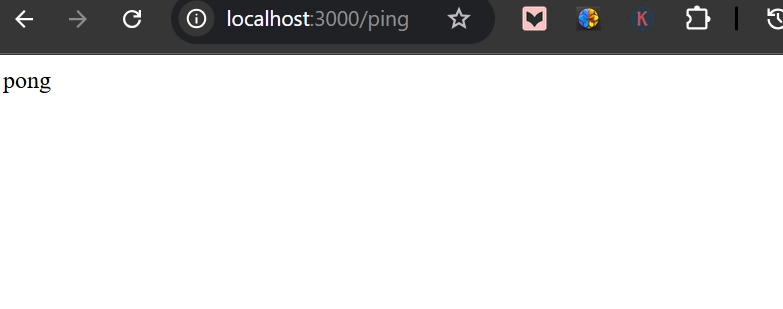

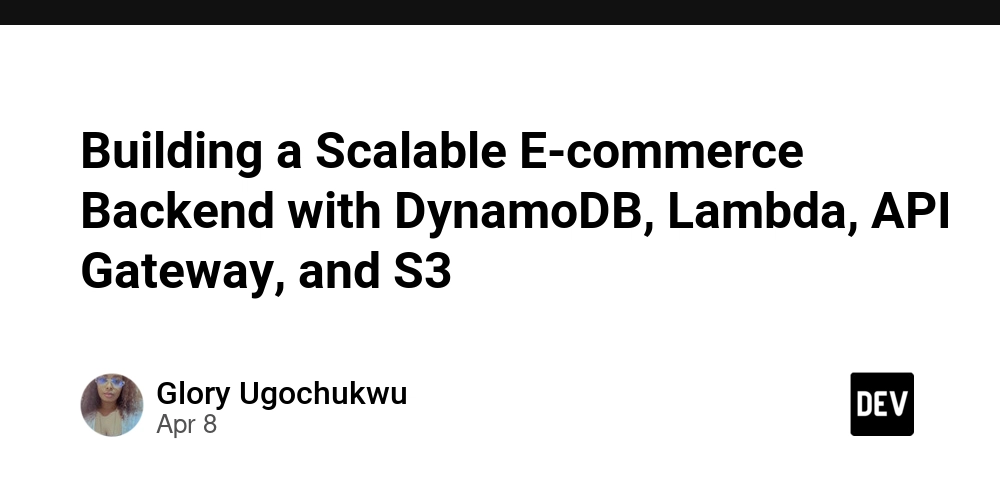












![From drop-out to software architect with Jason Lengstorf [Podcast #167]](https://cdn.hashnode.com/res/hashnode/image/upload/v1743796461357/f3d19cd7-e6f5-4d7c-8bfc-eb974bc8da68.png?#)










































































































.jpg?#)































_ArtemisDiana_Alamy.jpg?#)


 (1).webp?#)







































































-xl.jpg)














![Yes, the Gemini icon is now bigger and brighter on Android [U]](https://i0.wp.com/9to5google.com/wp-content/uploads/sites/4/2025/02/Gemini-on-Galaxy-S25.jpg?resize=1200%2C628&quality=82&strip=all&ssl=1)








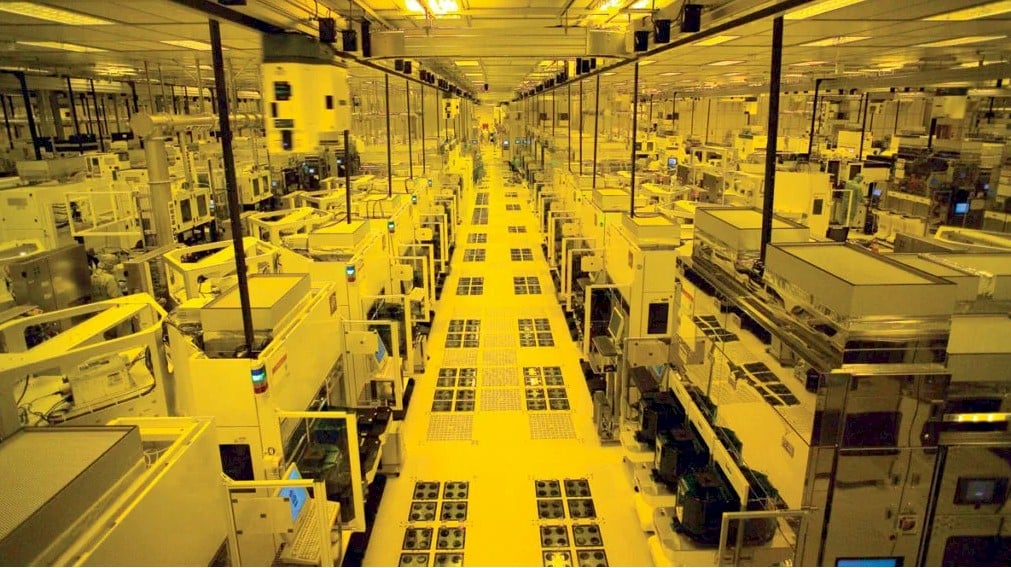


![Apple Rushes Five Planes of iPhones to US Ahead of New Tariffs [Report]](https://www.iclarified.com/images/news/96967/96967/96967-640.jpg)
![Apple Vision Pro 2 Allegedly in Production Ahead of 2025 Launch [Rumor]](https://www.iclarified.com/images/news/96965/96965/96965-640.jpg)



















